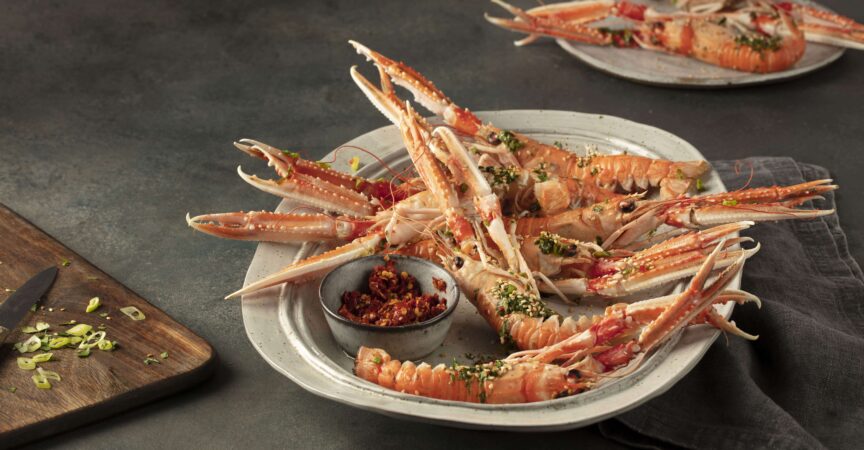Cooking up a storm from across the pond: Why UK seafood should be on your menu
The UK lies in a unique position where the warm waters of the Gulf Stream meet the colder waters of the North Atlantic. This provides a unique, nutrient-rich environment where a huge variety of marine species can thrive. Strong currents ensure the fish are constantly swimming, producing firm textured flesh and exceptional flavour. This means you don’t need to add many accompaniments to help UK seafood taste delicious.
For a small island, the UK has a huge variety of seafood. From an abundance of shellfish – including lobster, crab, whelk, mussels, oysters, and langoustines – to a vast selection of fish species, such as salmon, trout, cod, mackerel, halibut and sole; there’s something for all tastes.An outstanding exemplar is Scottish Salmon. Farmed in Scotland’s cold, clear lochs, it’s consistently acknowledged as the world’s best by international seafood buyers.
The UK has a global reputation for high-quality seafood and is home to some of the freshest fish and shellfish in the world. The skilled supply chain is characterized by knowledgeable communities working within a robust regulatory framework, who ensure maximum freshness and quality of their catch, resulting in great tasting, nutritious seafood that can be consistently trusted.
The UK seafood sector is renowned for its top-class food safety and traceability from sea to plate, making it the home of responsibly caught produce. Fish and shellfish stocks are carefully managed under a strict quota-based system to ensure sustainable harvesting, and environmental disturbance is minimized wherever possible through low impact harvesting methods.
Consumers are eating more fish and experimenting with new proteins, while keeping sustainability top of mind. The versatility of UK seafood should enable you to use each piece of protein to its full potential – reducing wastage, becoming more economical and giving you a strong sustainability story for your customers. By exploring the different flavour profiles of various UK seafood cuts, you’ll be all set to maximize your produce from fillet to fin. UK seafood is a chef’s dream: it’s versatile, sustainable, top-quality and should be on your menu!
Chef John Higgins’ top 5 tips for cooking with UK seafood.
- Do a quick smell test – your seafood should smell clean and fresh.
- Simple is best – let the natural flavour of UK seafood shine.
- Poach, roast or fry? Choose the right method to cook your seafood.
- Oily fish like mackerel cooks better using ‘dry’ methods without additional oil e.g. baking or steaming. White fish like haddock is firmer in texture so is great for deep or pan frying.Simple, yet 100% delicious.
- Consistency is key. Equal portion sizes help standardize cooking times, giving you great results when cooking at scale.
- Make sure your seafood has a stamp of approval – traceability and sustainability are crucial.
The versatility of UK seafood means it pairs brilliantly with other ingredients – from seasonal and local produce and even cocktails. Using sustainably harvested sugar kelp found off the Scottish Hebrides, Isle of Harris gin has a distinctive maritime flavour, with subtle, salty-sweet notes. With its refreshing, smooth taste, we’d recommend pairing Isle of Harris gin with the delicate taste of fresh white crab meat or plump, juicy, British scallops. Isle of Harris gin is available at select liquor stores throughout Canada.
Watch Webinar
This webinar provides a transatlantic take on the seafood industry, with tips from our panel of renowned chefs on how you can incorporate delicious UK seafood into your kitchens.
Get in touch
If you are looking to source a UK product or learn more about the UK offer, please contact: Kathryn Wade, Trade Officer – Food & Drink, Department for International Trade, British Consulate-General Vancouver, at Kathryn.Wade@mobile.trade.gov.uk.









